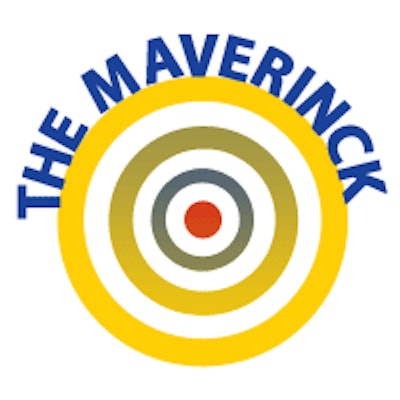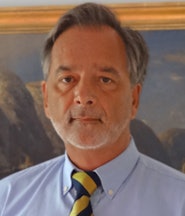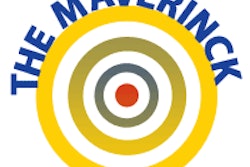
This year's best medical paper so far appeared at the end of January. It wasn't published in Radiology or another leading medical journal, but in the New York Review of Books. The author is Dr. Arnold S. Relman, a succinctly articulate man and leading figure in U.S.-American internal and social medicine. In his paper, he revealed the final realization of his life. He learned the hard way about the deficits of "modern" medicine.
I have dealt with this topic over the years, but Relman was perhaps more suitable and qualified than me to reach a wide public and make a major impact on health politics. In this column, I will try to give a glimpse into his latest articles.
 Dr. Peter Rinck, PhD, is a professor of diagnostic imaging and the president of the Council of the Round Table Foundation (TRTF) and European Magnetic Resonance Forum (EMRF).
Dr. Peter Rinck, PhD, is a professor of diagnostic imaging and the president of the Council of the Round Table Foundation (TRTF) and European Magnetic Resonance Forum (EMRF).From 1977 to 1991, Relman was the editor of the New England Journal of Medicine. In the autumn of 1980, he introduced the term "medical-industrial complex" -- coined from Dwight D. Eisenhower's "military-industrial complex."
The most important healthcare development of the day is the recent, relatively unheralded rise of a huge new industry that supplies healthcare services for profit. Proprietary hospitals and nursing homes, diagnostic laboratories, home-care and emergency-room services, hemodialysis, and a wide variety of other services produced a gross income to this industry last year of about $35 billion to $40 billion. This new "medical-industrial complex" may be more efficient than its nonprofit competition, but it creates the problems of overuse and fragmentation of services, overemphasis on technology, and "cream-skimming," and it may also exercise undue influence on national health policy.1
In an interview some years later, he went against vested interests and profiteering by colleagues:
Many people think that doctors make their recommendations from a basis of scientific certainty, that the facts are very clear and there's only one way to diagnose or treat an illness. In reality, that's not always the case. Many things are a matter of conjecture, tradition, convenience, habit. In this gray area, where the facts are not clear and one has to make certain assumptions, it is unfortunately very easy to do things primarily because they are economically attractive.2
Last year, shortly after his 90th birthday, he fell down the stairs in his home, broke his neck, and spent weeks in the surgical intensive care unit (ICU) of the Massachusetts General Hospital, as well as other hospitals in Boston. When in intensive care, he started scribbling -- and this finally turned into one of the best articles I have read about hospitals and our health system, both in North America and in Europe. The article begins like this: "I am a senior physician with over six decades of experience who has observed his share of critical illness -- but only from the doctor's perspective." This thought is resumed further down: "Despite all [my] ailments, I had never needed more than a brief hospitalization."
In his article, he stated that he learned about some aspects of the U.S. health system he had never thought of before: intensive care treatment and rehabilitation seen through the eyes of a patient.
What did this experience teach me about the current state of medical care in the U.S.? Quite a lot, as it turns out. I always knew that the treatment of the critically ill in our best teaching hospitals was excellent. That was certainly confirmed by the life-saving treatment I received in the Massachusetts General emergency room ... But what I hadn't appreciated was the extent to which, when there is no emergency, new technologies and electronic record-keeping affect how doctors do their work. Attention to the masses of data generated by laboratory and imaging studies has shifted their focus away from the patient. Doctors now spend more time with their computers than at the bedside...What personal care hospitalized patients now get is mostly from nurses ... I had never before understood how much good nursing care contributes to patients' safety and comfort, especially when they are very sick or disabled. This is a lesson all physicians and hospital administrators should learn. When nursing is not optimal, patient care is never good.
Even in the best of hospitals, with the best of medical and nursing care, the ICU can be a devastating psychological experience for patients -- as it was for me. Totally helpless, deprived of control over one's body, ICU patients desperately need the comforting presence of family and loved ones. I was fortunate to have that support, but some others in the MGH ICU were not. I can only hope they received extra attention from their nurses.
Applied to radiology, human quality in this discipline climbs and falls not only with a personal contact between physician and patient, but -- perhaps even more so -- with the guidance, information, and care given by radiographers. In radiology, maybe more than in other disciplines, old medical skills have turned into electronic habits. Art and craftsmanship have been replaced by reliance on machines. And the more we rely on machines, the more we cede control of our craft to them, to those who manufacture them, and to those who administer us. Do we want to become puppets of the "medical-industrial complex"? Or are we already puppets on their strings?
Relman died on his 91st birthday of causes unrelated to his accident.
I highly recommend that you read this article.
Dr. Peter Rinck, PhD, is a professor of diagnostic imaging and the president of the Council of the Round Table Foundation (TRTF) and European Magnetic Resonance Forum (EMRF).
References
- Relman AS. The new medical-industrial complex. N Engl J Med. 1980;303(17):963-970.
- Confronting the crisis in health care: An interview with Arnold Relman. (MIT) Technology Review. 1989;92(5):30.
- Relman AS. On breaking one's neck. The New York Review of Books. 2014;61(2): 26-29.
The comments and observations expressed herein do not necessarily reflect the opinions of AuntMinnieEurope.com, nor should they be construed as an endorsement or admonishment of any particular vendor, analyst, industry consultant, or consulting group.

















